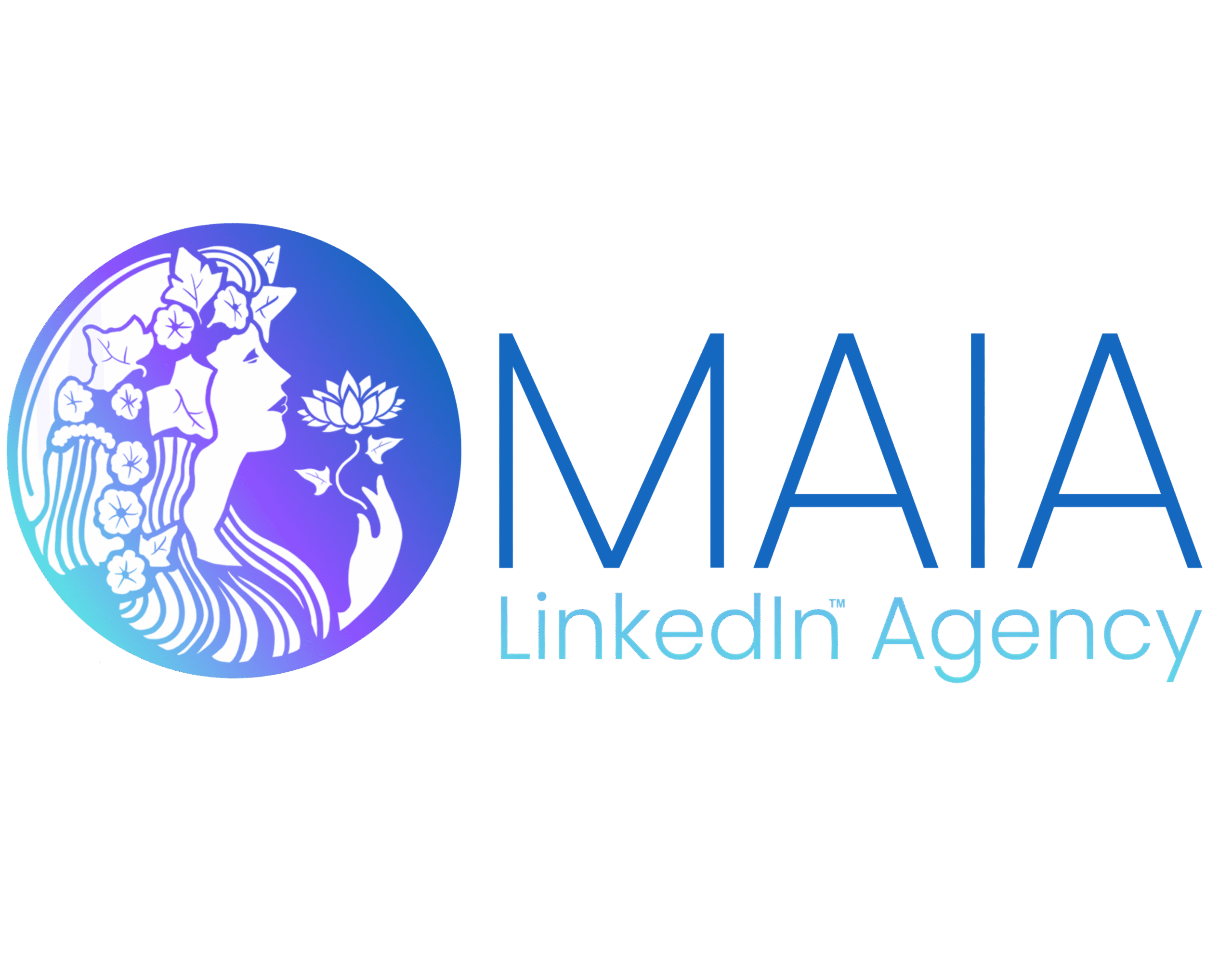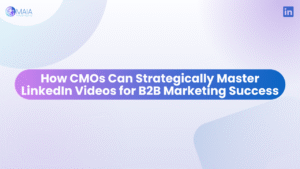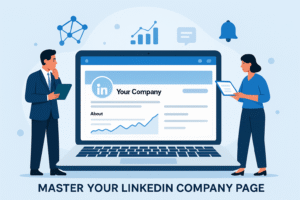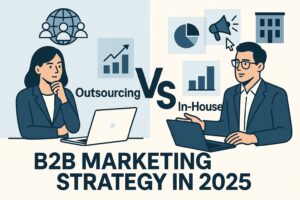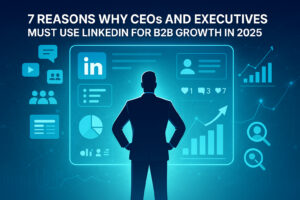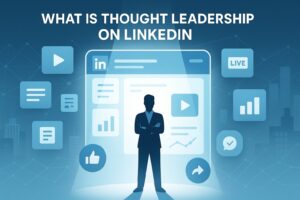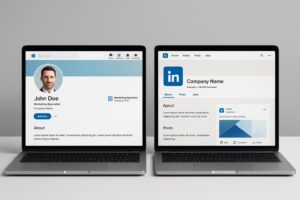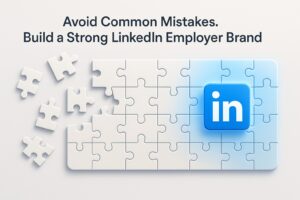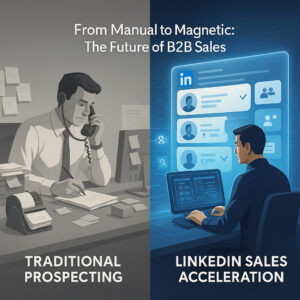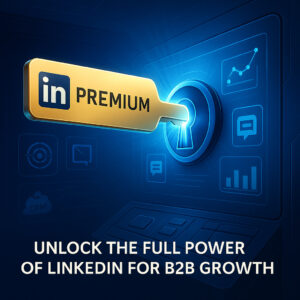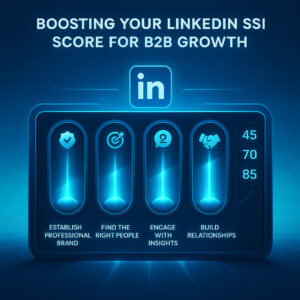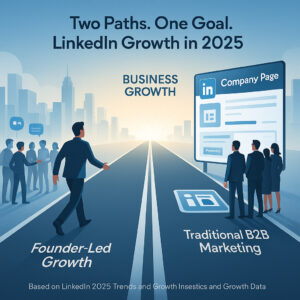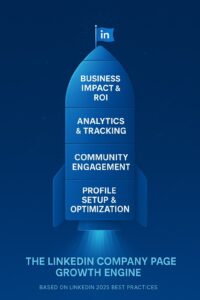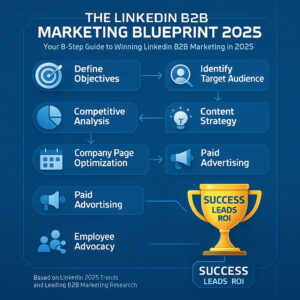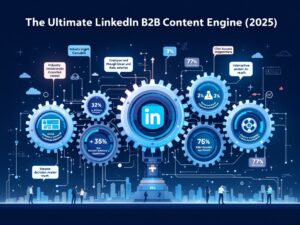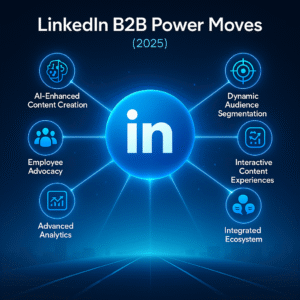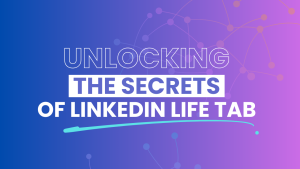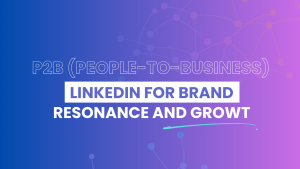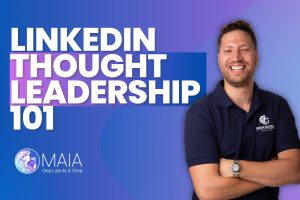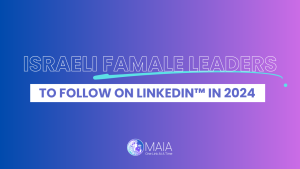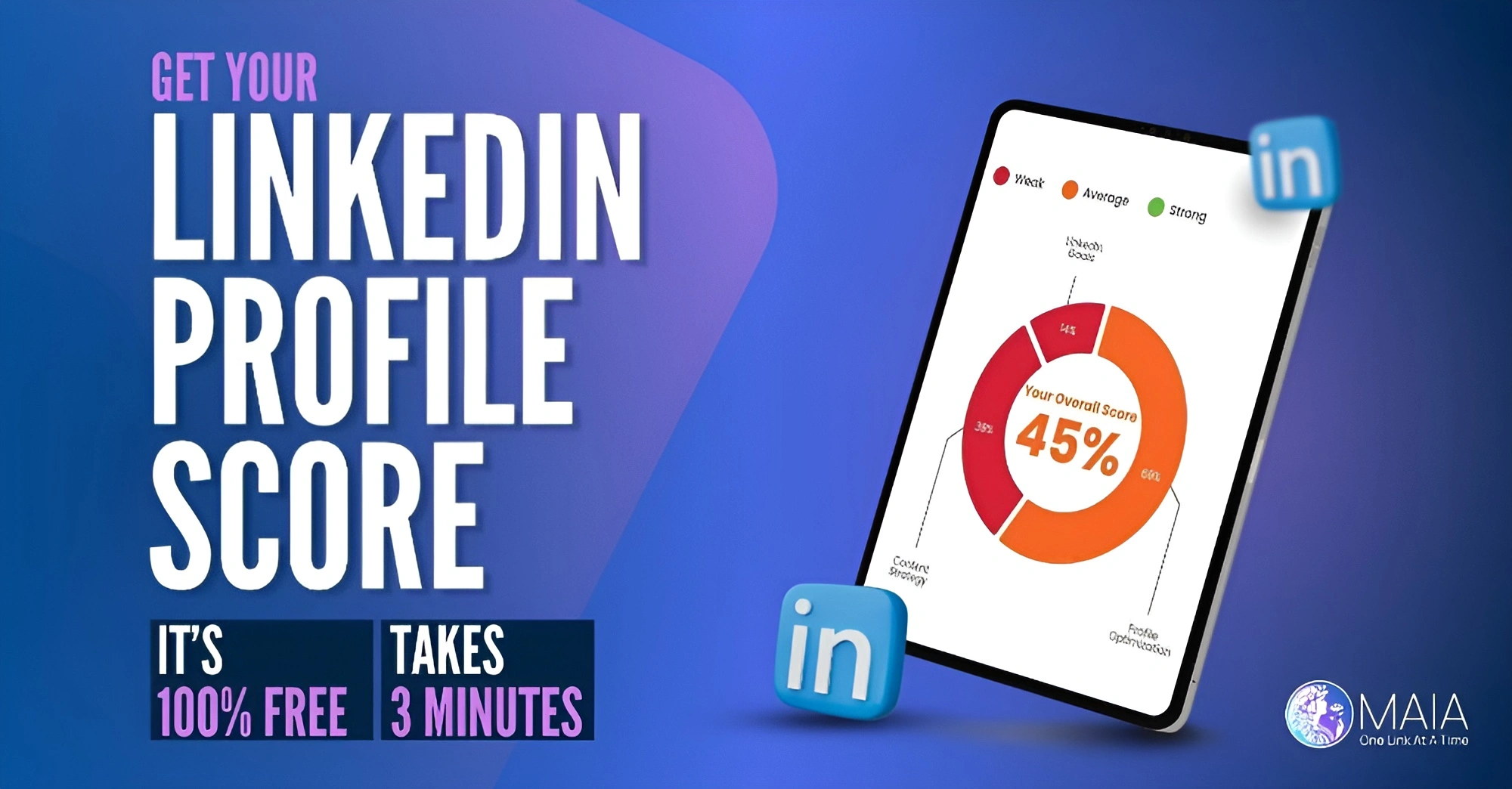LinkedIn has emerged as the premier platform for professionals seeking to build influence, foster connections, and drive business growth. As organizations and individuals compete for attention in a crowded digital space, mastering thought leadership on LinkedIn is no longer optional—it’s essential for those who want to be seen, heard, and respected within their industries. By sharing valuable insights and establishing a credible voice, you position yourself and your company as go-to resources in your field. This article delves into the strategies, tools, and best practices you need to become a thought leader on LinkedIn, helping you leverage the platform for measurable B2B marketing success.
What is Thought Leadership on LinkedIn: Strategies for Success
Introduction
In today’s digital-first business landscape, LinkedIn has become the epicenter for professional networking, industry discourse, and B2B relationship building. With a vast, highly engaged audience, the platform offers unparalleled opportunities for executives, founders, and subject matter experts to establish industry influence. Thought leadership on LinkedIn is more than a branding exercise—it’s a catalyst for trust, credibility, and sustained business growth. As more professionals recognize its value, competition for authority and attention only intensifies. To stand out, you must pair strategic intent with consistent, insightful content that addresses the evolving needs of your audience. This guide provides actionable strategies and proven techniques to help you master thought leadership on LinkedIn and unlock its full potential for your B2B marketing success.
Understanding Thought Leadership on LinkedIn
Thought leadership on LinkedIn is defined by the ability to provide original perspectives that shape industry conversations, inspire peers, and influence decision-making. Rather than simply sharing information, true thought leaders introduce new ideas, challenge conventional wisdom, and provide actionable insights that help their network navigate change and complexity.
What sets LinkedIn apart is its singular focus on professional growth and knowledge exchange. LinkedIn has over 1 billion members globally, with more than 300 million active users each month. This audience is actively seeking relevant, credible content to inform their decisions and stay ahead of industry trends. Unlike other social platforms that focus on entertainment or personal updates, LinkedIn’s ecosystem is designed to foster business relationships and elevate credible voices.
Effective thought leaders on LinkedIn share several common characteristics:
-
Expertise: Demonstrating deep industry knowledge and hands-on experience.
-
Originality: Offering unique viewpoints and forward-thinking analysis, not just echoing popular opinion.
-
Consistency: Engaging regularly through posts, articles, videos, and commentary.
-
Engagement: Actively responding to comments, fostering dialogue, and participating in wider industry discussions.
By embodying these qualities, you signal to your LinkedIn network that you are a trustworthy source of insight. The platform’s professional nature means that the value of your contributions is amplified—especially as decision-makers increasingly rely on thought leadership to evaluate both people and brands. Over 90% of executives rate LinkedIn as their first choice for professionally relevant content. In this environment, building your thought leadership is not just an advantage—it’s a necessity for sustained B2B success.
The Importance of Thought Leadership in B2B Marketing
Establishing yourself as a thought leader on LinkedIn delivers tangible benefits for B2B marketers. In complex buying cycles, trust and credibility are the most valuable currencies. As modern buyers become more discerning and less responsive to traditional advertising, they look for authoritative voices to guide their decisions and reduce risk.
Thought leadership bridges the credibility gap by positioning your brand as a knowledgeable partner rather than a mere vendor. Consistently sharing high-quality insights helps nurture relationships, influence perceptions, and maintain top-of-mind awareness throughout the buyer’s journey. Whether you’re educating on industry trends, sharing strategic perspectives, or offering practical case studies, your contributions help build trust and foster loyalty.
The data is compelling:
-
Thought leadership is a primary driver for decision-makers seeking expertise; over 90% of executives rate LinkedIn as their first choice for professionally relevant content.
-
B2B buyers are more likely to engage with brands and individuals that provide actionable, valuable insights instead of overt sales pitches.
Furthermore, thought leadership is a powerful differentiator in saturated markets. While products and services may be similar, your unique perspectives, willingness to address emerging issues, and ability to engage in meaningful dialogue set you apart. Brands recognized for their thought leadership are typically rewarded with more inbound opportunities, partnership offers, and access to top-tier talent. The cumulative effect is a stronger reputation, greater influence, and a consistent pipeline of business growth opportunities in the B2B space.
In summary, investing in thought leadership on LinkedIn is not just a branding strategy—it’s a business imperative for any organization aiming to lead, rather than follow, in its industry.
Key Strategies to Establish Thought Leadership on LinkedIn
Building a reputation as a thought leader on LinkedIn requires a deliberate, multi-pronged approach rooted in authenticity and ongoing engagement. Below are the essential strategies that will help you stand out and command authority in your field:
-
Define Your Niche and Core Message
Begin by clarifying the specific topics, industries, or challenges where your expertise is both unique and valuable. Articulate a central message that aligns with your business objectives and resonates with your target audience. This focus not only sharpens your content but also ensures you’re recognized as an authority in a well-defined area, making it easier for your network to identify and trust your expertise.
-
Create High-Value, Original Content
Thought leaders are creators, not just curators. Invest in producing original articles, insightful commentary, and data-driven analysis. Use storytelling and personal anecdotes to make your content engaging and relatable. High-value content demonstrates your commitment to your audience’s success and distinguishes you from those who merely recycle industry news.
-
Leverage Multiple Content Formats
Don’t limit yourself to written posts. Mix long-form articles, short updates, infographics, and especially video into your content strategy. Video posts on LinkedIn receive five times more engagement than static content. By diversifying your content formats, you cater to different learning preferences and maximize your reach within the platform’s professional audience.
-
Engage Actively with Your Network
Thought leadership is a conversation, not a monologue. Respond promptly to comments, participate in relevant discussions, and recognize others’ contributions. Your willingness to engage authentically builds community, fosters trust, and signals that you are accessible and invested in your network’s success.
-
Post Consistently
Consistency is key for visibility and momentum. Companies that post weekly on LinkedIn see a 5.6 times growth in followers. Develop an editorial calendar to ensure a steady flow of timely, relevant content that addresses your audience’s evolving needs and interests.
-
Collaborate with Other Influencers
Expand your reach and credibility by partnering with other thought leaders, industry experts, or complementary brands. Joint projects—such as interviews, panel discussions, or co-authored articles—introduce your insights to new audiences and provide fresh perspectives for your network.
-
Utilize LinkedIn Live and Video Content
Take advantage of LinkedIn’s live streaming and video capabilities to interact in real time and deliver dynamic, engaging content. Live streams on LinkedIn generate seven times more reactions and 24 times more comments than regular videos. Regular video updates, behind-the-scenes content, and interactive Q&A sessions enhance your visibility and foster deeper engagement with your audience.
Applying these strategies with intention and consistency will help you build authority, foster genuine connections, and position yourself as a trusted source of insight in the LinkedIn ecosystem. Remember, thought leadership is about providing lasting value—not simply accumulating followers or likes.
Leveraging LinkedIn Features for Thought Leadership
LinkedIn’s suite of publishing and engagement tools is tailored for professionals who want to showcase expertise and connect with their audience at scale. Master these features to maximize your thought leadership impact:
-
LinkedIn Articles:
Publish long-form content to explore topics in depth and demonstrate subject-matter expertise. These articles are evergreen assets that remain accessible on your profile and serve as a portfolio of your thought leadership.
-
LinkedIn Posts:
Share short-form updates, industry news, quick tips, or provocative questions to maintain regular engagement and spark timely discussions.
-
Native Video:
Incorporate video to explain complex ideas, share behind-the-scenes insights, or conduct expert interviews. Video posts on LinkedIn receive five times more engagement than static content.
-
LinkedIn Live:
Host live events, Q&As, or panel discussions to connect with your audience in real time. Live streams on LinkedIn generate seven times more reactions and 24 times more comments than regular videos.
-
Polls:
Use polls to gather feedback, encourage participation, and initiate conversations about industry trends or challenges relevant to your audience.
-
LinkedIn Newsletters:
Build a dedicated subscriber base for your insights. Newsletters deliver your best content directly to followers’ inboxes, increasing visibility and driving deeper engagement.
-
Tagging:
Mention other professionals to invite their input, extend the reach of your posts, and demonstrate thought leadership within a broader, collaborative context.
Monitor your analytics to track which content formats and topics resonate most with your audience. By understanding your audience’s preferences, you can refine your strategy and continually improve your thought leadership efforts.
Measuring the Impact of Your Thought Leadership Efforts
Evaluating your progress as a thought leader requires systematic measurement of both quantitative and qualitative indicators. Here are the critical metrics and methods for tracking your impact:
-
Engagement Rate: Track likes, comments, shares, and reactions on your posts. High engagement signals that your content is resonating and encouraging active dialogue.
-
Follower Growth: Monitor how your audience expands over time. Follower growth is a strong indicator of increasing influence and reach.
-
Post Impressions: Measure the number of times your content appears in users’ feeds. With LinkedIn having over 1 billion members globally, with more than 300 million active users each month, maximizing impressions is crucial for visibility.
-
Profile Views: Increased profile views often reflect heightened interest in your expertise and can lead to new connections or business inquiries.
-
Lead Generation and Inbound Inquiries: Monitor the volume and quality of direct messages, connection requests, and leads that result from your thought leadership activities.
-
Qualitative Feedback: Pay attention to direct compliments, constructive criticism, and invitations to speak or collaborate. These signals help validate your perceived authority and influence.
Use LinkedIn’s analytics dashboard to segment your audience by industry, role, or location. Review your top-performing posts to identify trends in format, timing, and subject matter. Remember, the most valuable outcomes—such as enhanced reputation and long-term trust—accrue gradually, reinforcing the importance of consistency and strategic focus in your thought leadership journey.
Common Pitfalls to Avoid in Thought Leadership
Even experienced professionals can make mistakes when building their thought leadership presence on LinkedIn. Be aware of these common pitfalls to ensure your efforts remain effective and credible:
-
Inconsistency: Irregular posting undermines your visibility and erodes audience trust.
-
Over-Promotion: Excessive self-promotion or product pitching diminishes your credibility and can alienate your audience.
-
Generic Content: Sharing superficial or recycled insights fails to engage discerning decision-makers seeking depth and originality.
-
Ignoring Engagement: Failing to respond to comments or participate in discussions signals disinterest and weakens your community presence.
-
Neglecting Data: Not tracking your performance means missing valuable opportunities to refine your content and maximize ROI.
By steering clear of these mistakes, you protect your reputation and ensure your thought leadership strategy delivers lasting value for your brand and audience.
FAQs on Thought Leadership on LinkedIn
Q: How often should I post thought leadership content on LinkedIn?
A: Aim to post at least once a week. Companies that post weekly on LinkedIn see a 5.6 times growth in followers. Consistency helps you maintain visibility and build a loyal audience.
Q: What type of content works best for establishing thought leadership?
A: High-value, original content such as industry analysis, case studies, and opinion pieces are most effective. Don’t forget to leverage video, as video posts on LinkedIn receive five times more engagement than static content.
Q: How do I know if my thought leadership is making an impact?
A: Track key metrics like engagement rates, follower growth, and inbound inquiries. Qualitative feedback from your network and increased profile views are also strong indicators of growing influence.
Q: Why is LinkedIn the preferred platform for B2B thought leadership?
A: LinkedIn is where professionals gather to exchange ideas and stay informed. Over 90% of executives rate LinkedIn as their first choice for professionally relevant content, making it the top choice for B2B marketers.
Q: Can thought leadership help with recruitment?
A: Absolutely. Demonstrating thought leadership can attract top talent who want to work with industry innovators.
For strategic guidance and proven expertise in LinkedIn B2B marketing, visit https://team-maia.com/ for more resources and support on your journey to thought leadership.
